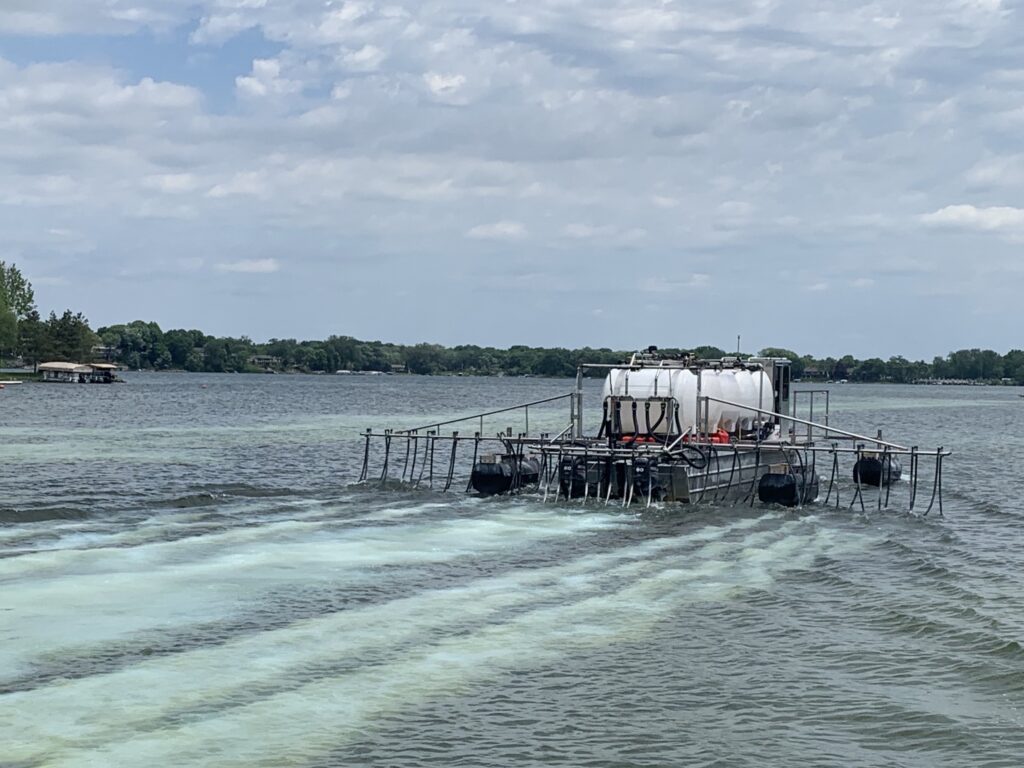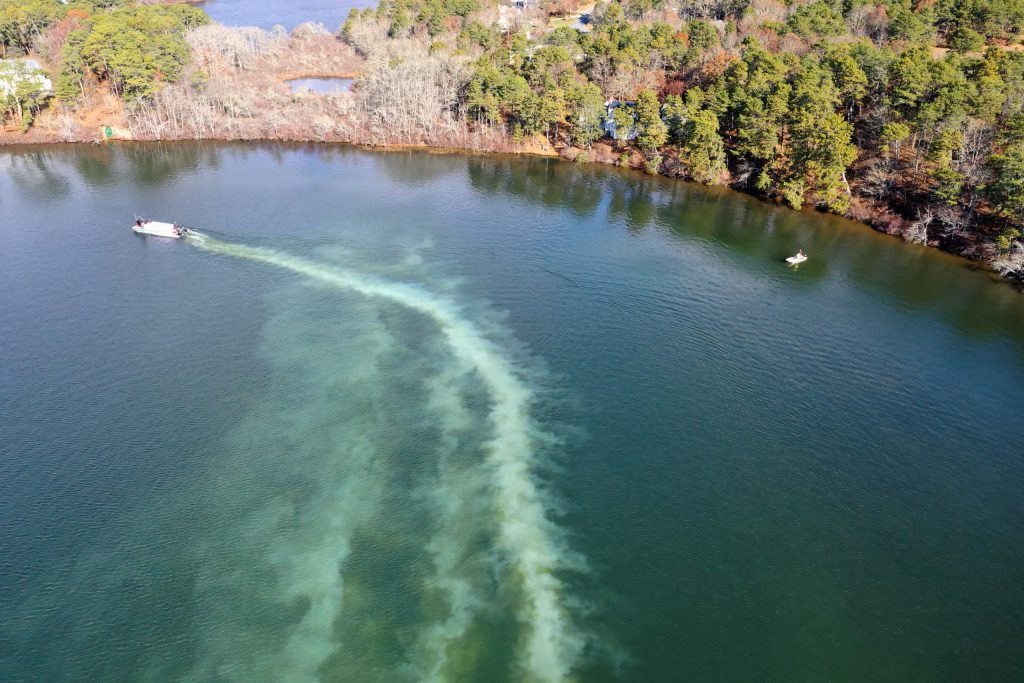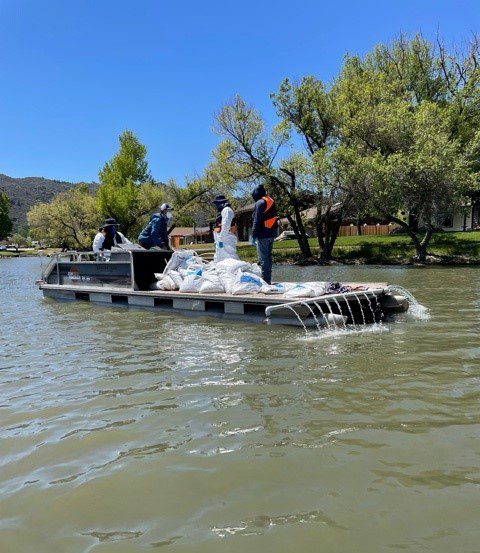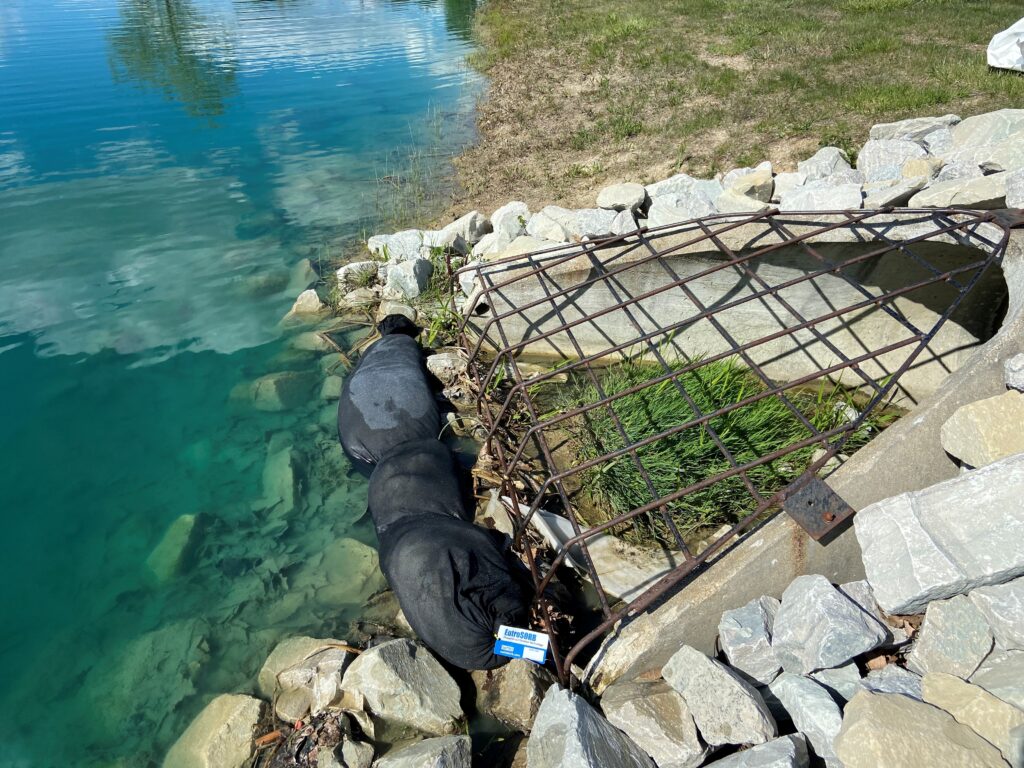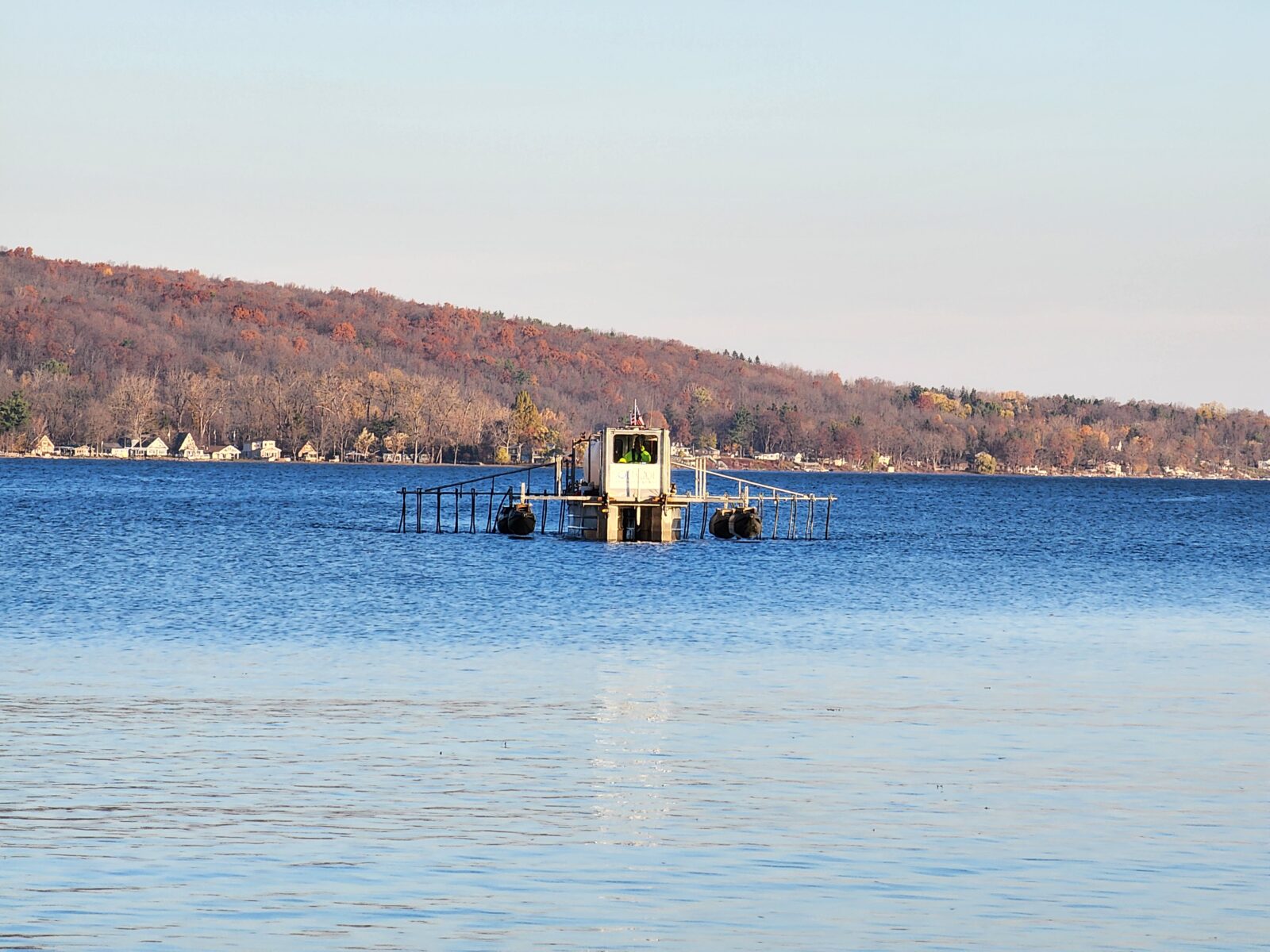
Why Nutrient Remediation?
Everyone wants to have a beautiful, pristine lake or pond, but these waterbodies can be difficult to manage. Each lake or pond comes with its own unique challenges that can be influenced by the surrounding environment or how the waterbody is utilized.
Nutrients like phosphorus and nitrogen are necessary to support the food chain and plant growth in large lakes or ponds, but when in excess, nutrients can do more harm than good. Excessive nutrient levels, combined with low oxygen levels or warm temperatures, can lead to harmful algal blooms, fish kills, and other undesirable ecological consequences.
Through the process of nutrient remediation, we can help balance the levels of nutrients in lakes and ponds to prevent nutrient pollution and maintain healthy water quality. At SOLitude, we use a variety of advanced techniques and tools to monitor and manage nutrient levels so you can maintain healthy water quality and prevent the development of poor water quality issues.
Different Nutrient Remediation Methods
Taking a proactive approach to lake management can help prevent nutrient pollution before levels get out of hand. However, if nutrient levels do become unhealthy, nutrient remediation solutions can be implemented to restore balance. There are a variety of nutrient remediation methods commonly used in lake and pond management, but determining which solution is best for your waterbody will depend on the size of your lake or pond, budget, and goals.
Explore Nutrient Remediation Solutions
Alum
Alum is a long-standing, natural nutrient remediation solution that works best in lakes or highly turbid water. Commonly used in recreational lakes and drinking water reservoirs, this well-studied substance is endorsed by the North American Lake Management Society and has been utilized for water quality restoration for over 60 years.
This nutrient removal method injects aluminum sulfate below the water’s surface using specialized application technology that dynamically adjusts flow rates according to boat speed and depth readings to help ensure uniform alum dosage throughout the waterbody. As alum is injected into the water, it then forms a floc that binds with the excess phosphorus and other particles in the water column. The floc sinks to the bottom of the waterbody and creates millions of phosphorus-binding sites, blocking the release of phosphorus from the sediment. This process helps reduce nutrient pollution throughout the lake and improves water quality and clarity.
SOLitude’s team of experts has completed over 200 alum projects, improving over 35,000 acres of water in recreational lakes and drinking water reservoirs. You can relax knowing our experts are utilizing our state-of-the-art application vessels that are custom-designed to apply alum safely and effectively.
Lanthanum-Modified Clay
Another nutrient remediation solution recommended to limit phosphorus levels is the use of lanthanum-modified clay or bentonite. Lanthanum products bind with excess phosphorus in the water column and can also target phosphorus in the bottom sediments. Experts typically recommend these solutions to remove nutrients in stormwater ponds or smaller waterbodies where phosphorus levels can become more concentrated.
Phosphorus Filtration Bags
Phosphorus filtration bags are designed to combat nutrient pollution by rapidly capturing phosphorus in areas of moving water such as stormwater ponds, streams, and canals. Once the filters are full, they are physically removed from the waterbody for off-site disposal.
Each of these solutions is a safe and environmentally friendly option for nutrient remediation. When applied by an experienced professional, these solutions can provide long-lasting results to help keep your waterbody healthy and improve water quality.
Preventing Nutrient Pollution
Each nutrient remediation method helps maintain a clean and healthy waterbody, but they’re not a catch-all solution. Pairing nutrient remediation with other natural lake management methods, such as native shoreline plantings or aeration systems, works hand in hand to combat nutrient pollution. Native vegetation around the shoreline can prevent nutrients from entering the water from stormwater runoff. These vegetative buffers also stabilize the shoreline, helping prevent erosion and shoreline collapse. In addition, picking up trash and pet waste, reducing lawn fertilizer near water, and bagging leaves and grass clippings are also simple ways to limit nutrient pollution.
Protect Your Waterbody from Nutrient Pollution with SOLitude
Although nutrients are vital to our aquatic ecosystems, it’s important to make sure they remain at a safe and healthy level. With annual management and proactive solutions, we can ensure that your waterbody remains balanced and safe so you can enjoy boating, fishing, swimming, and much more with peace of mind. Get the most out of your waterbody with professional lake management.
SOLitude Lake Management is a nationwide environmental firm committed to providing sustainable solutions that improve water quality, enhance beauty and preserve natural resources.
SOLitude’s team of aquatic scientists specializes in the development and execution of customized lake, stormwater pond, wetland and fisheries management programs. Services include water quality testing and restoration, algae and aquatic weed control, installation and maintenance of fountains and aeration systems, shoreline erosion control, muck and sediment removal and invasive species management. SOLitude partners with homeowners associations, golf courses, private landowners, businesses and municipalities. SOLitude Lake Management is part of Rentokil, a leading business services company, operating across the United States, Canada and Puerto Rico.
For more information, visit SOLitude Lake Management at solitudelakemanagement.com, and connect on Facebook, LinkedIn and Twitter.








